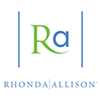How to Handle Complications in the Treatment Room: Pt 2

Earlier this month I wrote about how to reduce the risk of running into complications in the treatment room. In this post I will cover what to do when the unplanned occurs and how to address specific complications during a treatment.
While there is much you can do to eliminate the risk, complications may still occur simply because there are always some elements we cannot control. Clients may not know what their skin is allergic to, or may inadvertently forget to mention active medications or topicals they are currently using. It doesn’t mean you’ve done anything wrong as a practitioner. There are just too many factors that play a role in the outcome of the treatment.
Allergies
One major factor is allergies. Clients can be allergic to nearly anything you can think of. Some of the most common allergies are to milk, nuts, herbs, and sometimes fruit, which means they could experience a reaction from a milk-based mask, a fruit-based enzyme, or an herbaceous topical.
Alertness Even During Simple Treatments
Reactions can occur during any treatment from waxing to spa facials to chemical peels and microdermabrasion. It’s important to be prepared no matter how rudimentary the procedure may seem to you. Thinking complications only occur with more aggressive treatments, is often where skincare professionals make the mistake.
With the exclusion of allergic reactions most complications occur after the client leaves the office. Some possible reactions and how to address them include:
- Edema (swelling) – Use ice or cold packs, a soothing formula, such as Calming Skin Gel that contains ingredients like willow herb, white ginger and hydrocortisone, or a topical aloe vera, and recommend an antihistamine. If it is severe, it may require a physician referral.
- Erythema (redness) – If it does not abate within 24 hours, use a post-care topical or growth factors.
- Raised rash – Use a calming skin gel and have client discontinue use of all other topicals.
- Pruritus (itching) – Use a calming skin gel or the Post Balm Lubricating Ointment with licorice root extract and boldine.
- Pigmentation changes:
- Hypopigmentation – when the absence of melanin is on a superficial level, not a permanent condition, advise clients to use a post-care topical like epidermal Growth Factor Serum and camouflage with make-up or powdered minerals. It will heal on its own.
- Hyperpigmentation – it is important not to over-stimulate. Provide clients with epidermal growth factor and a lightening agent such as kojic acid, daisy flower or L-arbutin. Advice them to avoid sun exposure and use an SPF 30 daily. A progressive AHA treatment or lightening facial may also be rendered.
- Demarcation – this generally occurs from prematurely picking the skin. Direct clients to use epidermal growth factor along with an SPF 30 such as Daytime Defense SPF30. A mild AHA or enzyme treatment can also be used.
- Systemic reactions (lightheadedness, nausea, headache) – Have the client drink plenty of water to flush the system, consider suggesting Tylenol. If it persists it may require a physician referral.
If your client experiences a reaction, it is essential not to panic. Stay calm, remove everything from the skin, and remind them to stay calm as well. With skin reactions less is always more. Piling on the product actually increases the irritation.
Your best defenses against complications will be in the preventative measures – skin analyses, patch tests, product and protocol knowledge – and having those tools, ingredients and formulas on hand to correct complications. Don’t be afraid to try new treatments and modalities, just be sure to have a strong background knowledge, be well-prepared, and have had an open, honest conversation with your client of all potential outcomes.
What tools do you have in place to prevent complications in the treatment room?
